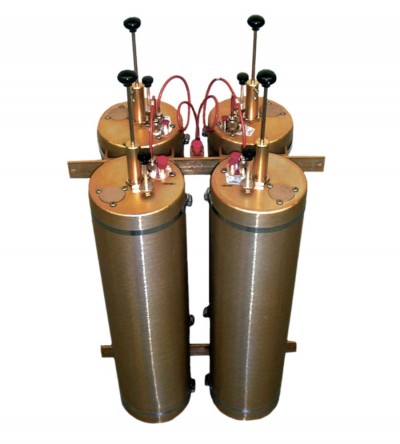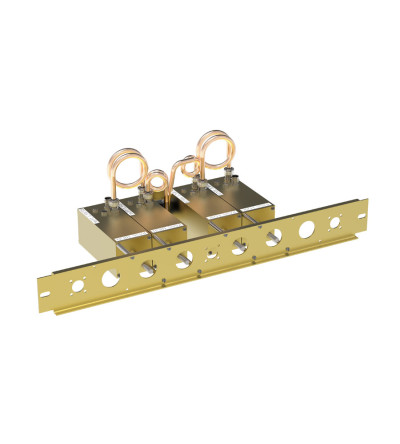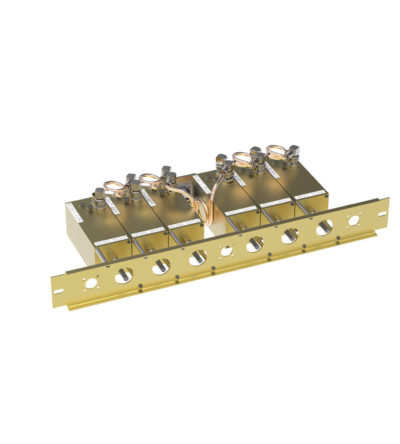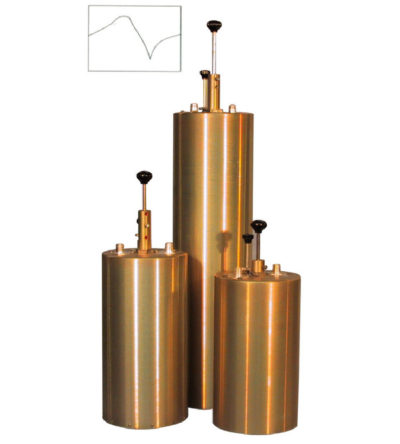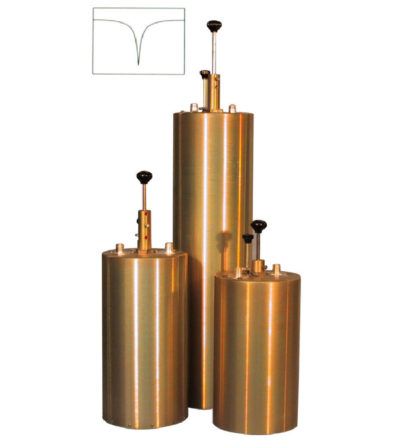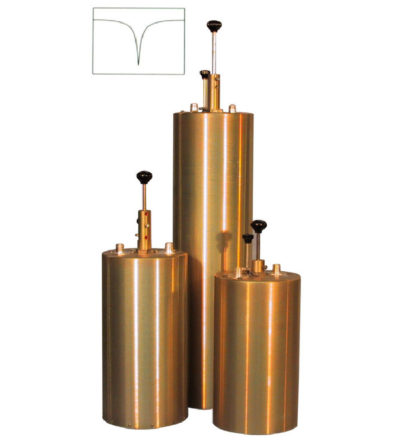- Designed for the combination of two frequencies requiring extra isolation. Can also be used as efficient pre-selectors
- Available in 4 or 6 cavity configurations
- Temperature compensated to ensure frequency stability
- High attenuation to minimize desense and interference from adjacent systems
- Adjustable loops: each cavity has a calibration index for easy field tuning
-
 Designed for quick and easy installations
Designed for quick and easy installations -
 Designed for quick and easy installations
Designed for quick and easy installations- Designed for the combination of two frequencies requiring extra isolation. Can also be used as efficient pre-selectors
- Available in 4 or 6 cavity configurations
- Temperature compensated to ensure frequency stability
- High attenuation to minimize desense and interference from adjacent systems
- Adjustable loops: each cavity has a calibration index for easy field tuning
-
 Ideal for compact, high isolation installations
Ideal for compact, high isolation installations- Designed for the combination of two frequencies that require extra isolation. Can also be used as efficient pre-selectors
- Temperature compensated to ensure frequency stability
- High attenuation to minimize desense and interference from adjacent systems
-
 Ideal for compact, high isolation installations
Ideal for compact, high isolation installations- Designed for the combination of two frequencies that require extra isolation. Can also be used as efficient pre-selectors
- Temperature compensated to ensure frequency stability
- High attenuation to minimize desense and interference from adjacent systems
-
 Ideal for compact, high isolation installations
Ideal for compact, high isolation installations- Designed for the combination of two frequencies that require extra isolation. Can also be used as efficient pre-selectors
- Temperature compensated to ensure frequency stability
- High attenuation to minimize desense and interference from adjacent systems
-
 Designed to pass a frequency band and reject a narrow band of frequencies
Designed to pass a frequency band and reject a narrow band of frequencies- Can reject frequencies on either the high or low side of the pass frequency
- Temperature compensated to ensure frequency stability
- High attenuation to minimize desense and interference
-
 Designed to pass a frequency band and reject a narrow band of frequencies
Designed to pass a frequency band and reject a narrow band of frequencies- Can reject frequencies on either the high or low side of the pass frequency
- Temperature compensated to ensure frequency stability
- High attenuation to minimize desense and interference
-
 Designed to pass a frequency band and reject a narrow band of frequencies
Designed to pass a frequency band and reject a narrow band of frequencies- Can reject frequencies on either the high or low side of the pass frequency
- Temperature compensated to ensure frequency stability
- High attenuation to minimize desense and interference
-
 Designed to pass a frequency band and reject a narrow band of frequencies
Designed to pass a frequency band and reject a narrow band of frequencies- Can reject frequencies on either the high or low side of the pass frequency
- Temperature compensated to ensure frequency stability
- High attenuation to minimize desense and interference
-
 Designed to reject one narrow band of frequencies, while letting all others pass in the operating band
Designed to reject one narrow band of frequencies, while letting all others pass in the operating band- Can be cascaded or added to one another in order to sharpen the attenuation of the rejection curve
- Temperature compensated to ensure frequency stability
- High attenuation to minimize desense and interference from adjacent systems
- Adjustable loops: each cavity has a calibration index
-
 Designed to reject one narrow band of frequencies, while letting all others pass in the operating band
Designed to reject one narrow band of frequencies, while letting all others pass in the operating band- Can be cascaded or added to one another in order to sharpen the attenuation of the rejection curve
- Temperature compensated to ensure frequency stability
- High attenuation to minimize desense and interference from adjacent systems
- Adjustable loops: each cavity has a calibration index
-
 Designed to reject one narrow band of frequencies, while letting all others pass in the operating band
Designed to reject one narrow band of frequencies, while letting all others pass in the operating band- Can be cascaded or added to one another in order to sharpen the attenuation of the rejection curve
- Temperature compensated to ensure frequency stability
- High attenuation to minimize desense and interference from adjacent systems
- Adjustable loops: each cavity has a calibration index

